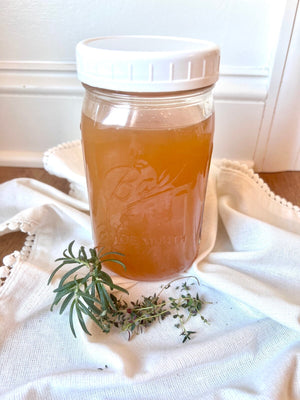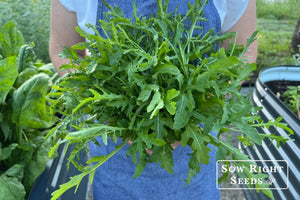How to Grow Creeping Thyme: A Fragrant Herb & Lawn Alternative
Creeping thymeCreeping thyme (Thymus praecox) is a resilient, evergreen herb that forms a dense mat of tiny, fragrant leaves and delightful small flowers. It’s also a highly adaptable plant that is most often used as a beautiful and fragrant lawn alternative. It can also be grown in rock gardens, pots, and other spaces that need a plant to hold the soil in place.

Why Consider a Creeping Thyme Lawn?
Creeping thyme can quickly establish a dense mat of evergreen leaves that can withstand moderate foot traffic. It’s excellent for filling gaps between pavers and stepping stones as it spreads to cover even rocky slopes. Here are a few more reasons why creeping thyme makes a great alternative to a turf lawn.
Low Maintenance: Unlike traditional lawns, a creeping thyme lawn requires little to no mowing. It isn’t a heavy feeder, so it requires much less fertilization than lawns do. Finally, this plant is drought-resistant, which means less watering.
Disease Resistant: Creeping thyme isn’t generally susceptible to any known diseases or pests, making maintenance that much easier.
Ecological Considerations: Creeping thyme beats out turf lawns as a more environmentally friendly alternative. In addition to needing less fertilizer, water, and mowing, in late spring, its lavender flowers attract butterflies, honey bees, and wild bees.
Pest-Repellent: Rabbits and deer aren’t interested in creeping thyme. It also has some natural mosquito repellent properties.
Aroma: A creeping thyme lawn has a light, pleasing fragrance with just a touch of mint. The scent intensifies when the plants are walked on.
Versatility: Creeping thyme thrives even in challenging environments. Whether it's rocky terrains, pathways, or even containers, this hardy herb can find its place.
Growing Creeping Thyme From Seed
It’s easy to grow creeping thyme herb from seed. Start by sowing the seeds indoors about 8 weeks before the last spring frost. Scatter over a seed-starting mix, lightly pressing into the surface as the seeds need light to germinate. Keep the mix consistently moist and provide plenty of light.
Germination may take 2-3 weeks, so be patient. Move your creeping thyme seedlings to individual containers once the first 4 true leaves appear. Once the threat of frost has passed, they're ready to be hardened off and transplanted outdoors.

How to Plant Creeping Thyme Seedlings
When you’re ready for transplanting, space your seedlings about 6-8 inches apart. Over time, the plants will spread out and form a lush ground cover. Creeping thyme prefers well-drained soil, so avoid overwatering. You can also loosen and enrich the soil before planting by mixing in some compost or aged manure. Regular watering in the initial weeks helps the roots establish. As they grow, they'll need less attention and become more drought-tolerant. A thin layer of mulch can help retain soil moisture and prevent weeds.

Try Growing Creeping Thyme
If you’ve never experienced the loveliness of creeping thyme, you should try growing your own! It’s an easy-to-grow herb that is remarkably robust, fragrant, and beautiful. A dense mat of creeping thyme, with its lovely flowers and pleasing fragrance, can effortlessly transform your lawn or garden. Whether you're looking to add to your herb or rock garden, incorporate ground cover between pathways, or replace your traditional lawn, creeping thyme is an excellent choice to enhance the beauty of your surroundings.
Written by Teresa Chandler

6 comments
Popular Posts
-

Fresh Herb Bone Broth Recipe for the Instant Pot
-

Never Buy Arugula Again! Learn How to Grow It Easily from Seed




You can plant creeping thyme in the fall. The main consideration is that it has time to put down roots before freezing temperatures set in. The seeds take 2-3 weeks to germinate.
Can I plant in fall (zone 8b east of Seattle)? I know they Weill freeze late Oct/Nov, but there will fewer drenching rain storms
Dave – I’d suggest planting 2 or 3 seeds per 4" pot. These seeds are tiny! You can use a wet toothpick to carefully space seeds or sprinkle and then thin out the seedlings. When I direct sow, I sprinkle them and let them grow.
I want to start some red creeping thyme seeds indoors to transplant outdoors hopefully in 6 – 8 weeks. I’ve read instructions on how to start seeds indoors. I know to place them on the soil surface and lightly press. But, nothing is said about how many of these tiny, tiny, TINY! seeds are needed per 4" X 4" pot top surface…? Or, how exactly to evenly space the seeds on the soil surface …? Any suggestions would be appreciated.
Creeping Thyme seeds can be direct sown. However, if you already have a thick grass lawn, you will have better results if you first remove the grass. You can smother the grass with cardboard while starting your seeds indoors. Then, when you have healthy seedlings, you can transplant them about 6-8" apart.
Leave a comment